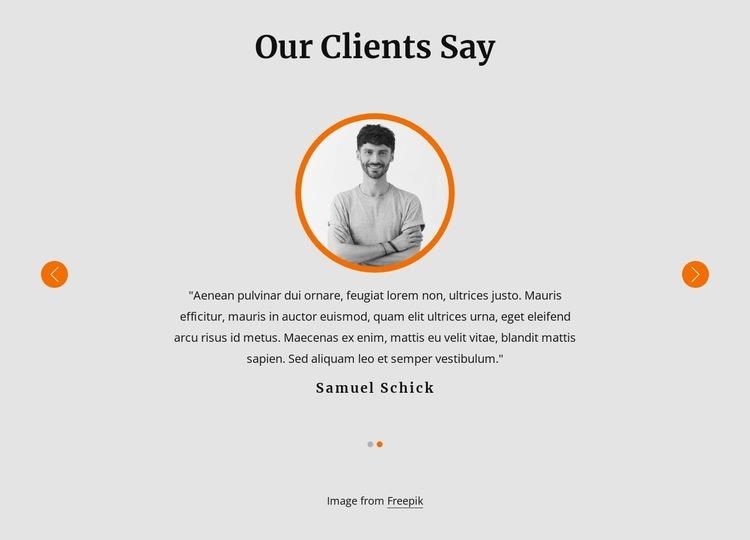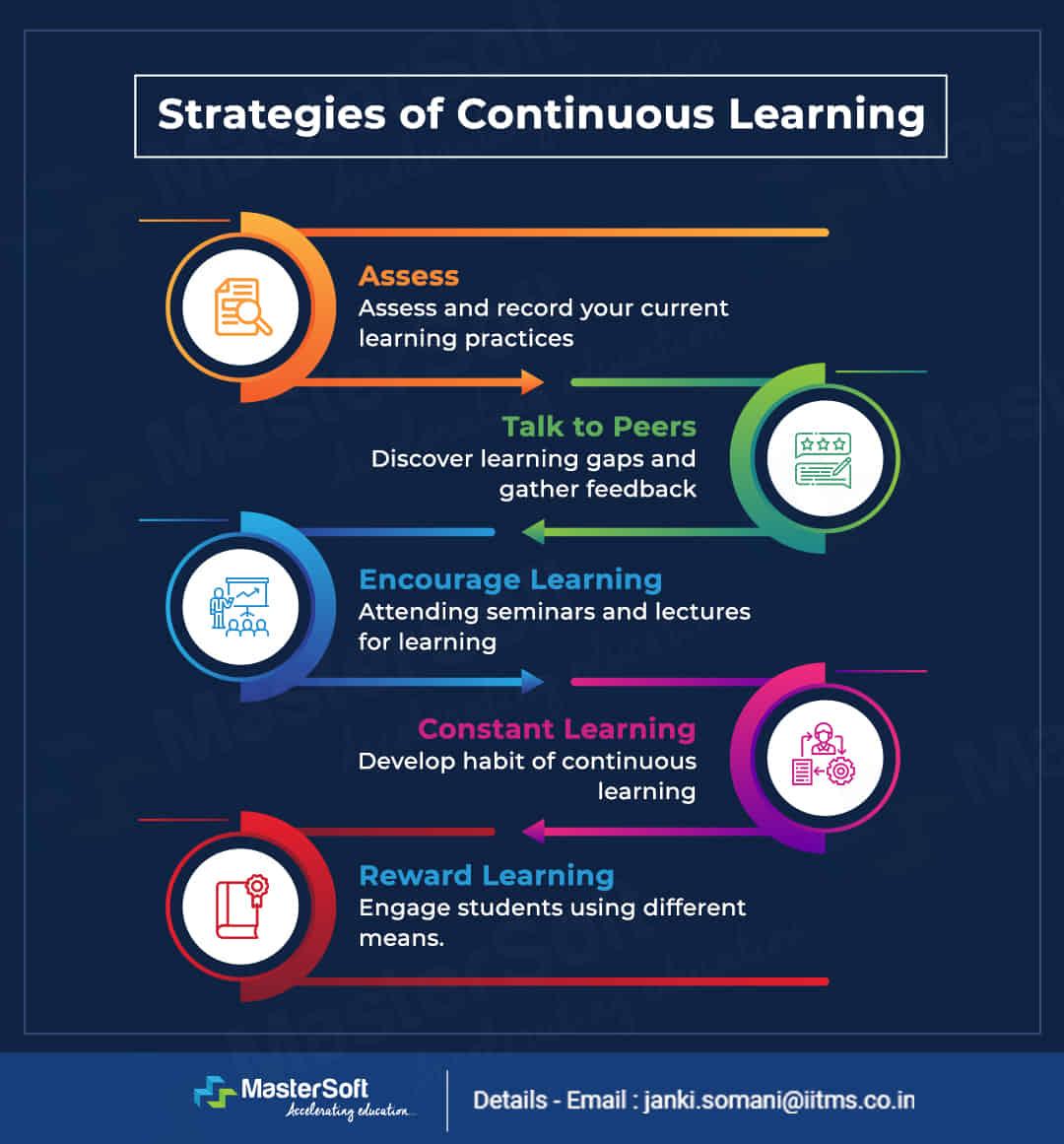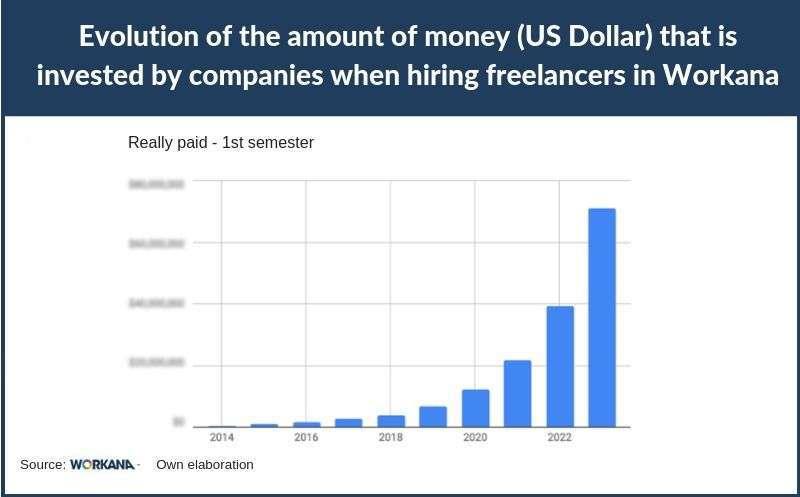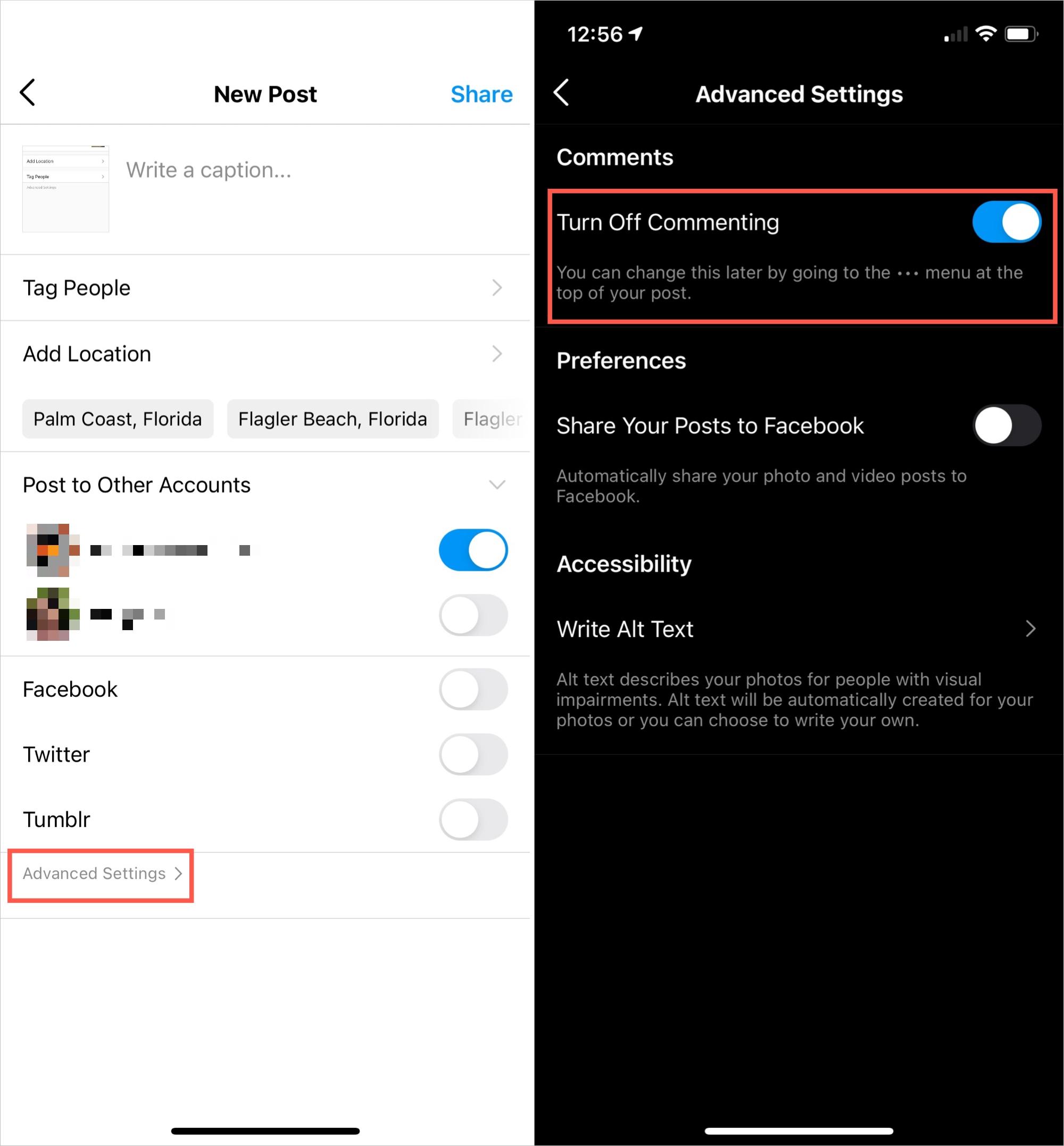Title: How too Grow Your Freelance Business: Unlocking Your Potential
Hey there,fellow freelancer! If you’re reading this,chances are your already on the journey of building something amazing—your very own freelance business. but let’s be honest, the freelance world can sometimes feel like a wild rollercoaster ride. One minute you’re riding high on new clients, and the next, you’re wondering where the next project will come from.
What if I told you that with a few strategic moves, you could not only stabilize but actually grow your freelance business? Imagine having a steady stream of clients, boosting your income, and gaining the freedom to choose projects that truly excite you. Sounds fantastic, right?
In this article, we’re going to explore proven strategies and tips that can propel your freelance career to new heights.Whether you’re just starting out or looking to expand your established business, these insights will empower you to take control of your freelance future. So grab a cup of coffee, get comfy, and let’s dive in—your freelance success story starts now!
Understanding Your Niche and target Market
To effectively grow your freelance business, it’s essential to have a deep understanding of your niche and target market. This means going beyond general knowledge and diving into the specifics that set you apart from the competition.Identifying a niche can help you tailor your services, attract the right clientele, and position yourself as an expert in your chosen field.
Start by asking yourself a few questions about your skills and passions:
- What services do you excel at?
- Who have you enjoyed working with in the past?
- What industries resonate with you?
By reflecting on these questions, you can pinpoint your unique strengths and preferences, allowing you to carve out a niche that aligns with your expertise and interests.
Next, it’s crucial to understand your target market. Who is your ideal client? Consider the following characteristics:
- Demographics: Age, gender, location, and occupation.
- Psycho-graphics: Interests, values, and lifestyle.
- Behaviors: Online habits, purchasing patterns, and preferred communication channels.
Gathering data on these aspects can enhance your marketing strategies, ensuring that your messages resonate with the right audience.
A great way to visualize your niche and target market is to create a simple table:
| Niche | Target Market | Key Services Offered |
|---|---|---|
| Graphic Design | Small Business Owners | Branding, Marketing Materials |
| Content Writing | Tech Startups | Blog Posts, Website Copy |
| Social Media Management | Local Restaurants | Content Creation, Engagement Strategies |
By maintaining a clear viewpoint on your niche and target audience, you can create tailored marketing strategies that attract the right clients. additionally, this clarity can guide your decision-making process as you grow and evolve in your freelance journey.

Building a Strong Personal Brand That Stands Out
In today’s competitive freelance landscape,establishing a strong personal brand is crucial for standing out. Your personal brand is more than just your logo or your website; its the perception people have of you based on your skills,values,and personality. Here’s how you can create a memorable identity that resonates with your target audience:
- Define your Unique Selling Proposition (USP): What sets you apart from others in your field? Identify your strengths and the unique qualities that make your work special.This could be anything from your design style to your approach to client collaboration.
- Craft a Consistent online Presence: Ensure your website, social media profiles, and portfolios reflect a cohesive brand identity. Use consistent visuals, colors, and tone of voice across all platforms to create a recognizable image.
- Engage with Your Audience: Building a personal brand isn’t just about broadcasting your work; it’s also about interaction. Respond to comments, engage in conversations, and showcase your personality.This helps build trust and a genuine connection with your audience.
To effectively communicate your brand, consider creating a content strategy. This could include blog posts, social media updates, or video content that highlights your expertise and interests. The more value you provide, the more likely potential clients will remember you when they need your services.
| content Type | Purpose | Frequency |
|---|---|---|
| Blog Posts | Showcase expertise | Weekly |
| Social Media Updates | Engage audience | Daily |
| Webinars | Provide value | Monthly |
Lastly, don’t underestimate the power of networking. Attend industry events, join online forums, and connect with other professionals. Each interaction is an opportunity to reinforce your brand and find new clients. Remember,a strong personal brand is built over time through consistent effort and genuine connections.

Leveraging Social Media to Expand Your Reach

Networking Effectively: The Key to Finding Clients
Building a strong network is essential for any freelancer aiming to expand their client base. Unlike a traditional job, freelancing often relies on personal connections and word-of-mouth referrals. By developing genuine relationships within your industry, you can open doors that might otherwise remain closed.Here are some strategies to enhance your networking game and attract new clients:
- Attend Industry Events: Conferences, workshops, and local meetups are excellent opportunities to meet potential clients and collaborators. Don’t just attend; engage with others, ask questions, and share insights.
- Leverage Social Media: Platforms like LinkedIn,Twitter,and Instagram are powerful tools for showcasing your work and connecting with others. Join groups related to your niche, share valuable content, and interact with others to increase your visibility.
- Offer Value: Position yourself as an expert by providing free resources, such as blog posts, webinars, or e-books.When you give people something useful, they’re more likely to remember you when they need a service you provide.
Networking isn’t just about making contacts; it’s about nurturing relationships.Follow up with people you meet, whether through a simple email or a message on social media. This helps reinforce your connection and keeps you on their radar.
Consider collaborating with other freelancers or businesses.Joint projects can introduce you to new audiences and potential clients. Plus, working with someone else can lead to referrals, where they send clients your way while you do the same for them.
| Networking Strategy | Benefits |
|---|---|
| Industry Events | Face-to-face connections, immediate feedback |
| social Media | Wider reach, ongoing engagement |
| Value Offering | Builds trust, establishes authority |
| Collaboration | Shared resources, increased referrals |
In a freelance world where competition is fierce, effective networking can set you apart. Remember, it’s not just about collecting business cards; it’s about fostering authentic relationships that can lead to long-term partnerships and a steady stream of clients.

Mastering client Communication for Long-Term Success
Effective communication is the backbone of any triumphant freelance business. Building strong relationships with clients not only fosters trust but also opens the door to repeat business and referrals. Here are some essential strategies to enhance your client communication:
- Active Listening: Pay attention to your clients’ needs and preferences. This shows that you value their input and are committed to delivering the best results.
- Clear Expectations: Set clear goals and deadlines from the outset. This minimizes misunderstandings and keeps both parties aligned throughout the project.
- Regular Updates: Keep your clients in the loop with regular progress reports. This not only reassures them but also allows for adjustments to be made if necessary.
- Personal Touch: Use personalized messages. A simple “I hope you’re doing well” can make clients feel valued beyond just the business transaction.
- Feedback Loops: Encourage feedback at various stages of the project. this helps you refine your work and also demonstrates your willingness to collaborate.
Incorporating the right tools can significantly improve your communication efficiency. Here’s a speedy overview of some popular platforms:
| tool | Purpose | Best For |
|---|---|---|
| Formal communications | Detailed project discussions | |
| Slack | Real-time messaging | Quick updates and team collaboration |
| Zoom | Video conferencing | Face-to-face meetings |
| Trello | Project management | Visual task tracking |
To truly master client communication, it’s important to adapt your style to each client. Some may prefer a more formal tone, while others appreciate a casual approach. Observing and adjusting your communication style can make a meaningful difference in how clients perceive you.
Moreover, handling conflicts gracefully is a critical skill. when disagreements arise, approach the situation calmly and seek to understand the client’s perspective. Addressing concerns promptly and professionally can turn a potential issue into an opportunity to strengthen the client relationship.
Creating a Compelling Portfolio That Sells Your Skills
In the competitive world of freelancing, a well-crafted portfolio is your best tool to showcase your abilities and attract clients. To stand out, your portfolio should not only display your work but also tell a story about your skills and experience. Here are some essential elements to include:
- High-Quality Samples: Include samples that reflect your best work. Choose projects that demonstrate a variety of skills and styles.
- Case Studies: Go beyond visuals. Write engaging case studies that explain your thought process, challenges faced, and how you achieved results. This adds depth to your portfolio.
- Client Testimonials: Showcase feedback from satisfied clients. Positive reviews can build trust and credibility,making potential clients more likely to choose you.
- Clear Branding: Ensure your portfolio reflects your personal brand. Use consistent colors, fonts, and logos to create a professional appearance.
- Contact Facts: Make it easy for potential clients to reach you. Include clear and accessible contact details on every page of your portfolio.
Organizing your portfolio is just as important as the content. A clean, easy-to-navigate layout will keep visitors engaged. Consider using a grid layout for project thumbnails,allowing viewers to quickly scan your work. When they click on a project,lead them to a dedicated page with more details.
Additionally, think about adding a section that highlights your skills in a visually appealing way. A simple table can effectively categorize your abilities and proficiency levels:
| Skill | Expertise Level |
|---|---|
| Graphic Design | Advanced |
| Content Writing | Intermediate |
| Web Development | Beginner |
don’t forget to keep your portfolio updated. As you complete new projects and hone your skills, regularly refresh your portfolio to reflect your most current work. This not only showcases your growth but also keeps your presentation fresh and relevant.
Setting Competitive Rates Without Undervaluing Yourself
As a freelancer, establishing your rates can feel like walking a tightrope. You want to be competitive and attract clients,but you also need to ensure that your skills and efforts are adequately valued. Here are some strategies to help you set the right rates without compromising your worth.
First,it’s essential to conduct market research. Understand what others in your niche are charging. This doesn’t mean you should undercut yourself to match their rates, but it provides a benchmark. Use platforms like:
- Freelancer.com – browse profiles to see what similar freelancers charge.
- Upwork – check the average rates based on your skills and experience.
- LinkedIn – connect with peers and gain insights into their pricing models.
Next, consider your experience, expertise, and the value you bring to your clients. Are you just starting out or do you have years of specialized knowledge? Create a tiered pricing model based on your experience level and the complexity of the work.For example:
| Experience Level | Hourly Rate | Project Rate |
|---|---|---|
| Beginner | $25-$50 | $200-$500 |
| Intermediate | $50-$100 | $500-$1000 |
| Expert | $100-$250+ | $1000-$5000+ |
Moreover, think about the services you offer. Are they highly specialized or more general? Niche services often command higher rates due to the unique expertise required. Don’t shy away from showcasing your unique selling points—what makes you different from the competition? Highlighting your strengths in your marketing materials can justify your pricing.
be confident in your rates. If you feel undervalued, it can reflect in your interactions with clients. When discussing your rates, frame it positively by focusing on the benefits they receive. Remind them that investing in quality work often leads to better results in the long run, making it a win-win scenario.

Using Client Testimonials to Boost Your Credibility
Client testimonials are a powerful tool in your arsenal to establish trust and credibility in the freelance marketplace. When potential clients see positive reviews from those who have previously worked with you, it reinforces their belief in your capabilities and encourages them to engage your services.
Why Testimonials Matter:
- They provide social proof, demonstrating that others have successfully benefited from your work.
- Testimonials can definitely help differentiate you from competitors by highlighting unique aspects of your service.
- They can address common objections or concerns potential clients might have.
To effectively showcase testimonials, consider these strategies:
- Feature them prominently: Place testimonials on your homepage or create a dedicated testimonials page.
- Use engaging visuals: Pair quotes with images of your clients (with their permission) to add a personal touch.
- Incorporate video testimonials: A short video can convey emotion and authenticity better than text alone.
It’s also helpful to categorize testimonials based on the services you offer. As an example, if you provide multiple services like graphic design and content writing, organize testimonials accordingly. This targeted approach allows potential clients to find relevant feedback quickly.
| Service | Client Feedback |
|---|---|
| Graphic Design | “The designs exceeded my expectations! Truly talented!” |
| Content Writing | “Engaging and well-researched content.Highly recommend!” |
don’t hesitate to ask for feedback after completing a project. Most clients are happy to share their thoughts, and their testimonials can provide a significant boost to your freelance reputation. Make it easy for clients to leave reviews by providing a simple link or form; the more seamless the process, the more likely they are to participate.

Embracing Continuous Learning and Skill Development
In the fast-paced world of freelancing, the only constant is change. As your industry evolves and new technologies emerge, staying ahead means committing to continuous learning and proactive skill development. This not only enhances your service offerings but also boosts your confidence and credibility in the marketplace.
Consider the following strategies to integrate learning into your freelance routine:
- Online Courses: Platforms like Coursera,Udemy,and LinkedIn Learning offer a plethora of courses tailored to various skill levels and fields. Dedicate a few hours each week to finish a course that aligns with your career goals.
- Networking and Community Engagement: Join online forums, social media groups, or local meetups related to your niche. Engaging with fellow freelancers can provide valuable insights and knowledge sharing.
- Webinars and Workshops: Attend industry webinars and workshops to learn about the latest trends, tools, and strategies. This not only helps you gain knowledge but also expands your professional network.
To effectively track your learning journey, consider creating a personal development plan. This should include specific goals, resources needed, and a timeline for achieving those skills. Here’s a simple template to get you started:
| Skill/Goal | Resource | Timeline | Status |
|---|---|---|---|
| Advanced Excel Skills | Online Course | 1 Month | In Progress |
| Social Media Marketing | Webinar | 2 Weeks | Not Started |
| Graphic Design Basics | Workshop | 3 Months | Completed |
Moreover, don’t underestimate the power of feedback. Regularly seek input from your clients and peers to identify areas for enhancement. Constructive criticism can illuminate blind spots in your skills and help you focus your learning efforts more effectively.
By embracing a mindset of continuous improvement, you not only refine your existing skills but also position yourself as a versatile and knowledgeable freelancer. In this way, you can adapt to market demands, attract more clients, and ultimately, grow your business sustainably.
Developing a Solid Work-Life Balance for Sustainable Growth
- Create a dedicated workspace: A designated area for work can improve concentration and signal to you and others when you are in work mode.
- Use a planner: Scheduling tasks and breaks can definitely help you allocate time efficiently while ensuring you don’t overlook critically important personal activities.
- Prioritize self-care: Regular exercise, hobbies, and social interactions are key components of a balanced life that foster long-term productivity.
- Project management software: Tools like Trello or Asana can help you organize tasks and deadlines, reducing stress and increasing efficiency.
- Time tracking apps: Apps like Toggl can provide insights into where your time goes, allowing you to identify areas for improvement.
- Automated invoicing: Streamlining your billing process can save you hours each month, leaving you with more time to enjoy your life outside of work.
| Tips for work-Life Balance | Description |
|---|---|
| Set Boundaries | Define your work hours and stick to them. |
| Utilize Technology | Leverage tools for task management and automation. |
| Focus on Self-Care | Make time for physical and emotional well-being. |
| Regular Breaks | Take short breaks to recharge during work hours. |
Frequently Asked Questions (FAQ)
Q&A: How To Grow Your Freelance Business?
Q1: What’s the first step to growing my freelance business?
A1: The first step is to clearly define your niche. Identify what you’re passionate about and where your skills shine. This will help you target the right audience. When you focus on a specific area, you position yourself as an expert, making it easier to attract clients who need your unique skills.
Q2: How critically important is networking for freelancers?
A2: Networking is crucial! It opens doors to opportunities and collaborations that you might not find or else. Attend industry events, join online communities, and don’t hesitate to reach out to others in your field. Building genuine relationships can lead to referrals and long-term clients.
Q3: Should I build a website? Why is it necessary?
A3: Absolutely, having a professional website is essential. It serves as your online portfolio, showcases your work, and builds credibility. Potential clients want to see what you can do and a well-designed website can make a great first impression. Plus, it’s a platform where you can share testimonials, blog posts, and your contact information.
Q4: What about social media? How can it help me?
A4: Social media is a powerful tool for freelancers! It allows you to connect with clients and showcase your work. Share your projects, insights, and engage with your audience regularly. It helps you stay top-of-mind and can even attract new clients through shares and interactions.Just remember to choose the platforms that align best with your target audience.
Q5: Do I need to invest in marketing my services?
A5: Yes, investing in marketing can significantly boost your visibility. Consider using content marketing,SEO strategies,or paid ads to reach a broader audience.Even a small budget can go a long way if you target it wisely. the key is to be consistent and track what works best for you!
Q6: How do I handle pricing my services?
A6: Pricing can be tricky, but research is your best friend. look at what others in your niche charge and adjust according to your experience and skill level. Don’t undervalue yourself; remember that your time and expertise are valuable! As you gain more experience and build your portfolio, consider raising your rates accordingly.
Q7: What if I face rejection or slow periods?
A7: Rejection is part of the freelance journey, and so are slow periods. Don’t let them discourage you! Use this time to improve your skills, refine your portfolio, or even learn something new. Keep reaching out to potential clients and stay positive. Persistence is key in this business.
Q8: Any final tips for maintaining growth in my freelance business?
A8: Yes! Stay adaptable and open to feedback. Regularly check in with your clients to ensure they’re satisfied. This not only builds stronger relationships but can also lead to repeat business. always be on the lookout for new skills to learn and trends in your industry to stay relevant. Growth is an ongoing process!
Remember,growing your freelance business doesn’t happen overnight. But with persistence, passion, and the right strategies, you can turn your freelance hustle into a thriving career!
Closing Remarks
As we wrap up our deep dive into growing your freelance business, remember that success doesn’t happen overnight.It’s about consistent effort, learning from your experiences, and adapting to the ever-changing landscape of freelancing. Whether you’re just starting out or looking to take your business to the next level, the strategies we discussed—building a strong personal brand, networking effectively, and constantly honing your skills—are the keys to unlocking your potential.
Now,take a moment to reflect on what you’ve learned. what steps can you implement today? Perhaps it’s reaching out to a new client, refining your portfolio, or simply setting aside time for professional development. The important thing is to take action and keep pushing forward.Remember, every great freelancer started where you are now. with passion, persistence, and the right approach, you can turn your freelance hustle into a thriving business. So, go ahead—embrace the journey, stay motivated, and don’t hesitate to seek out support from fellow freelancers. Your dream business is within reach, and the first step starts with you. Happy freelancing!



